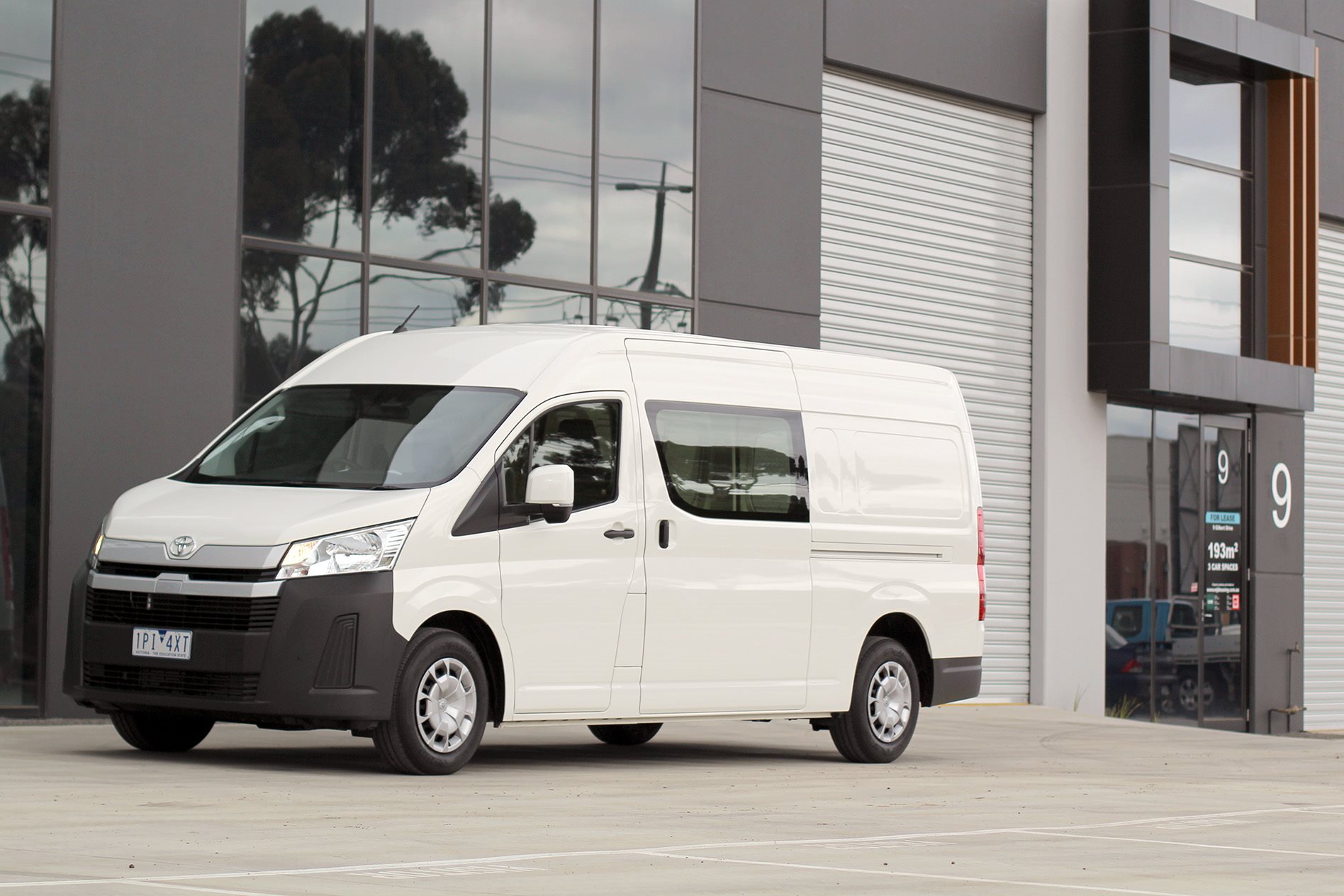
Toyota reckons it can make a better van than the Europeans, and the new Hiace gives the company reason to be confident.
What is it?
This isn’t just the first all-new Hiace in 15 years, but the specific van you see before you, the high-roofed, super-long-wheelbase two-seater, is the biggest version you can buy.
Not content with sitting by and watching European mid-size vans like the Ford Transit Custom, Volkswagen Transporter, Peugeot Expert and Renault Trafic eat into its market share, Toyota has engineered its sixth-generation Hiace from the ground up to be more comfortable and more practical, as well as better to drive, better equipped and safer.
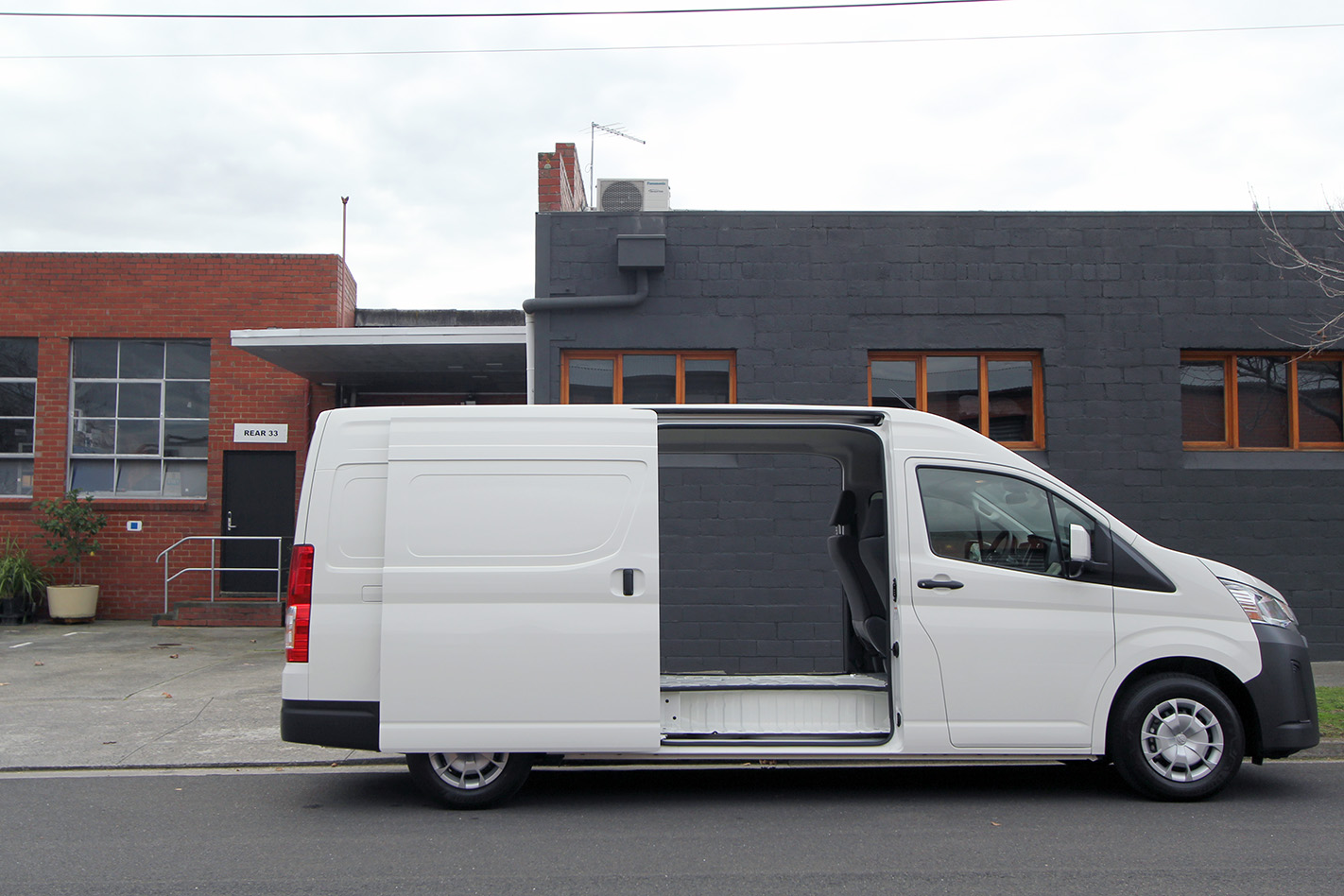
Glancing at the spec sheet, Toyota has succeeded on the last two counts. For one, autonomous emergency braking and active cruise control are standard, along with blind-spot monitoring and a reversing camera – both critical for a van.
Sat-nav is also standard, as is a quite modern infotainment touchscreen that should mean drivers will never need to fiddle with their phones to make calls or find their way to their next drop-off.
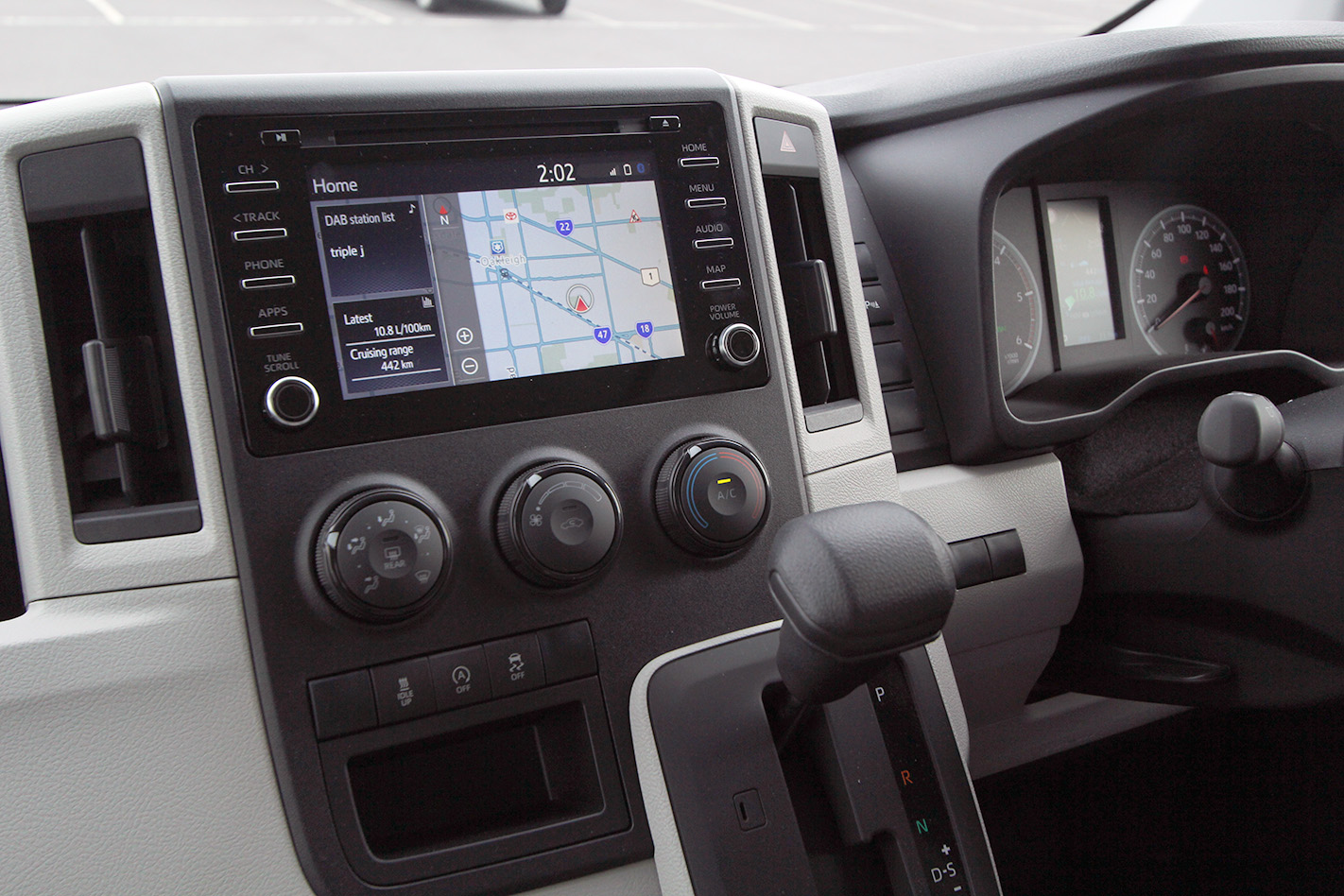
A much bigger change concerns the Hiace’s move to a Euro-style semi-bonneted bodystyle, rather than the cab-over design of the previous model that had the driver and front passengers sitting on top of the engine.
With the engine now in front of the seats and out of the way, there’s now more space in the front of the cab, better ergonomics, the ability to walk from the front seats into the cargo area unhindered, less noise and improved crash safety. There’s also no fewer than seven airbags – a segment leading number.
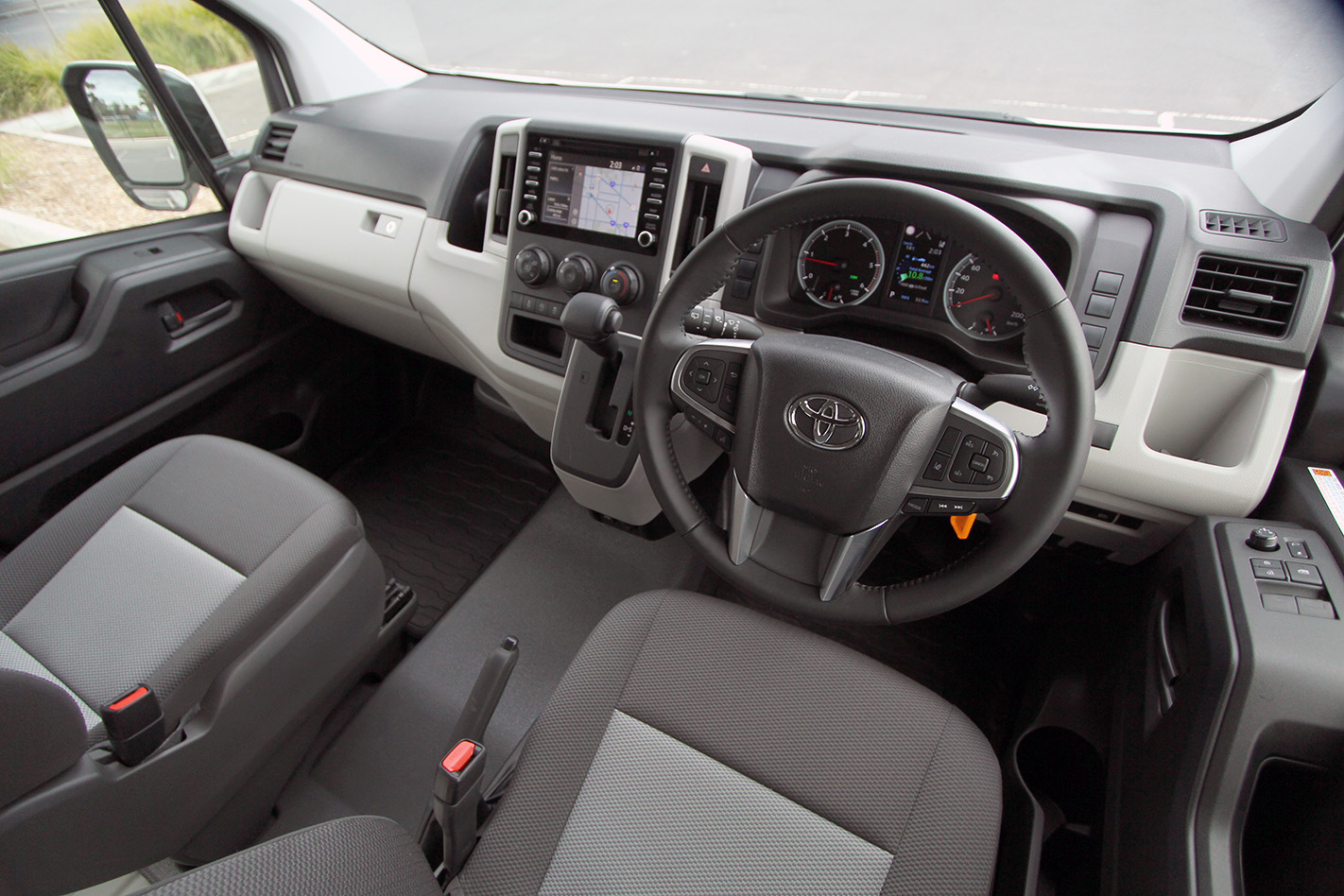
That change does introduce a sizable compromise, however. With a capacity of 9.3 cubic metres, the Hiace SLWB we’re testing here has 0.5 cubic metres less cargo space than the van it supersedes. Does that impinge on its utility as a work vehicle? Is its hefty $52,140 retail price too much? Read on.
What’s it like to drive?
Coming from the very utlilitarian and generally unpleasant-to-drive fifth-gen Hiace, the sixth-generation of Toyota’s commercial van immediately impresses with its civility. For one, driver ergonomics are significantly improved thanks to a more spacious footwell, greater seat adjustment range and a steering column that can adjust for both reach and rake.
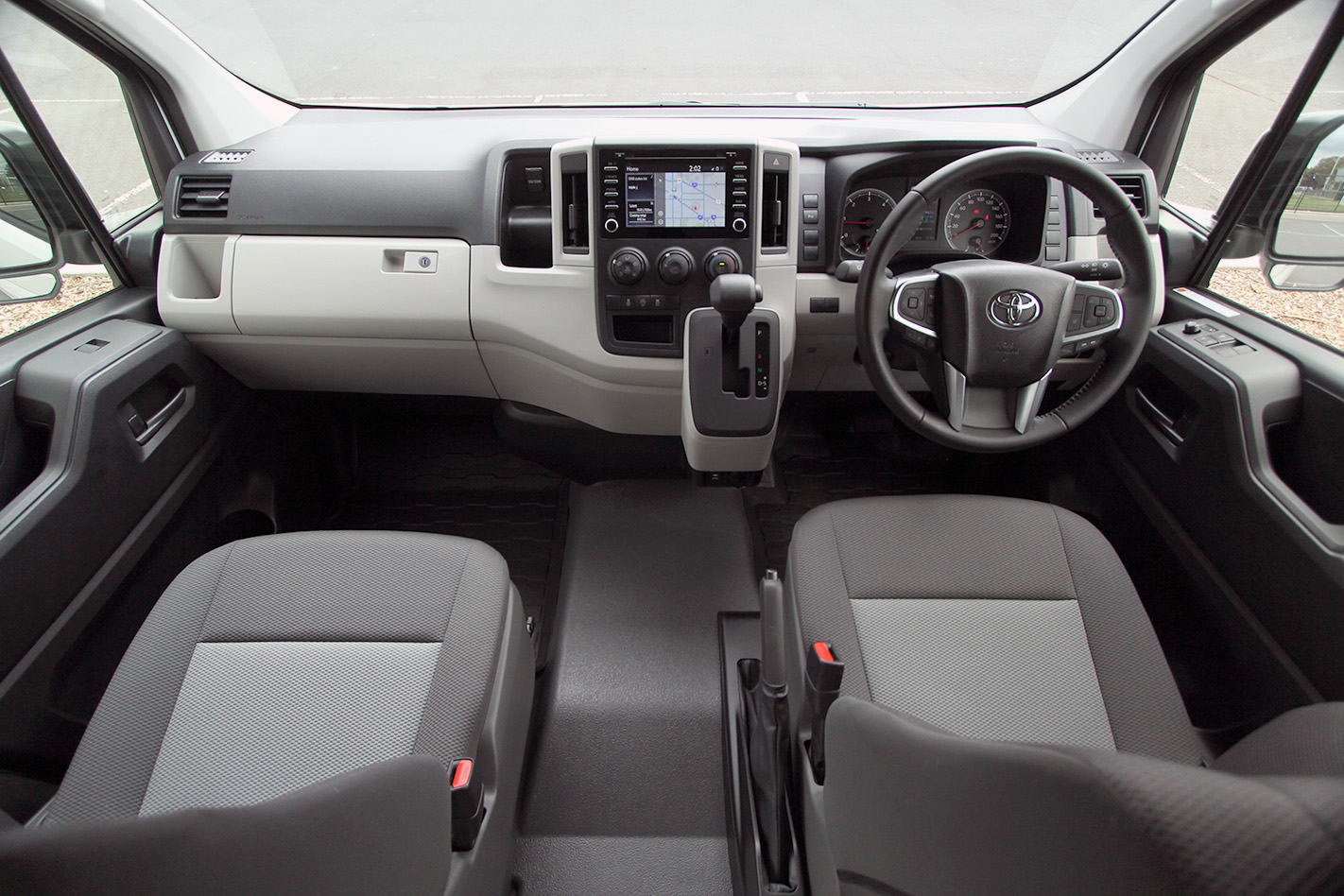
Bigger drivers may find their left knee rubbing against the dash plastics, but generally speaking this is a far more accommodating cabin than before, and as a result a far more pleasant thing to drive for long periods of time.
The SLWB van can be had with either diesel or petrol engines, but it’s the diesel we’re testing here that impresses the most. Sure, the 3.5 litre petrol V6 option has a huge 207kW/351Nm output, but it’s the diesel’s 450Nm torque maximum that actually motivates the 2.26-tonne Hiace the best. Connected to a six-speed automatic by default and driving the rear wheels – there’s no manual option in the SLWB range – this engine is surprisingly quiet and smooth, and our fuel consumption over a week of mostly-unladen driving came within half a litre of Toyota’s claim of 8.4 L/100km.
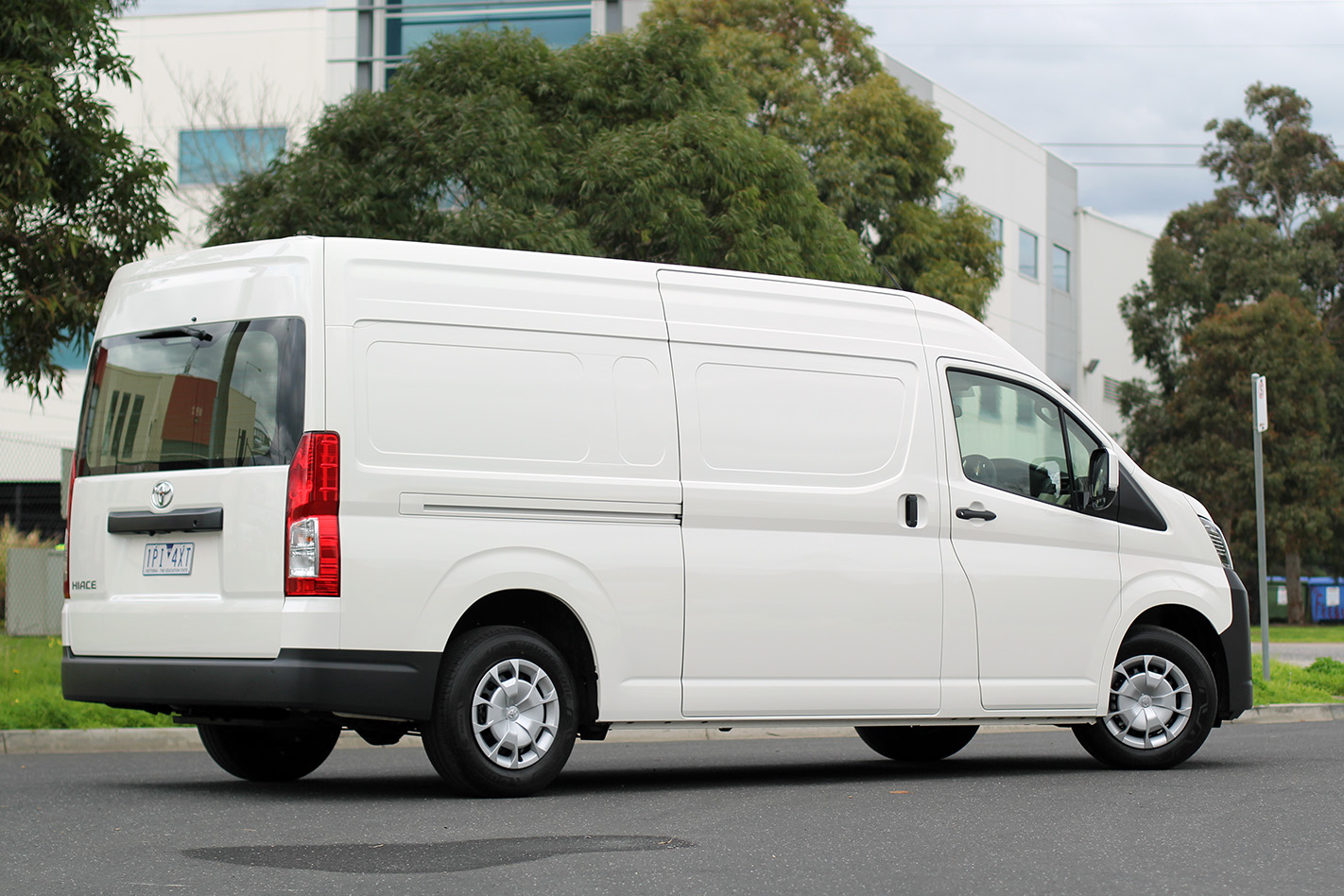
Part of that comes down to the more modern 2.8-litre diesel (the same as that used by the Toyota Hilux, Fortuner and Prado) and the fact the auto option now has six gears rather than the outgoing model’s four, but there’s also an engine start-stop function as standard – a critical fuel-saving feature that will no doubt appeal to any cost-conscious business operator.
Loaded up with a couple of hundred kilos, the Hiace still feels perky and willing to move. Having some weight also softens the leaf-sprung rear suspension to an agreeable level too, though even without any weight over the rear wheels it still handles fine and delivers decent ride comfort.
Couple that with a great view of the road ahead, big side mirrors with ancillary convex mirrors for kerb-watching, a bevy of driver-assist features and a superb cabin comfort, and the new Hiace is easily one of the better vans to spend the better part of a workday in.
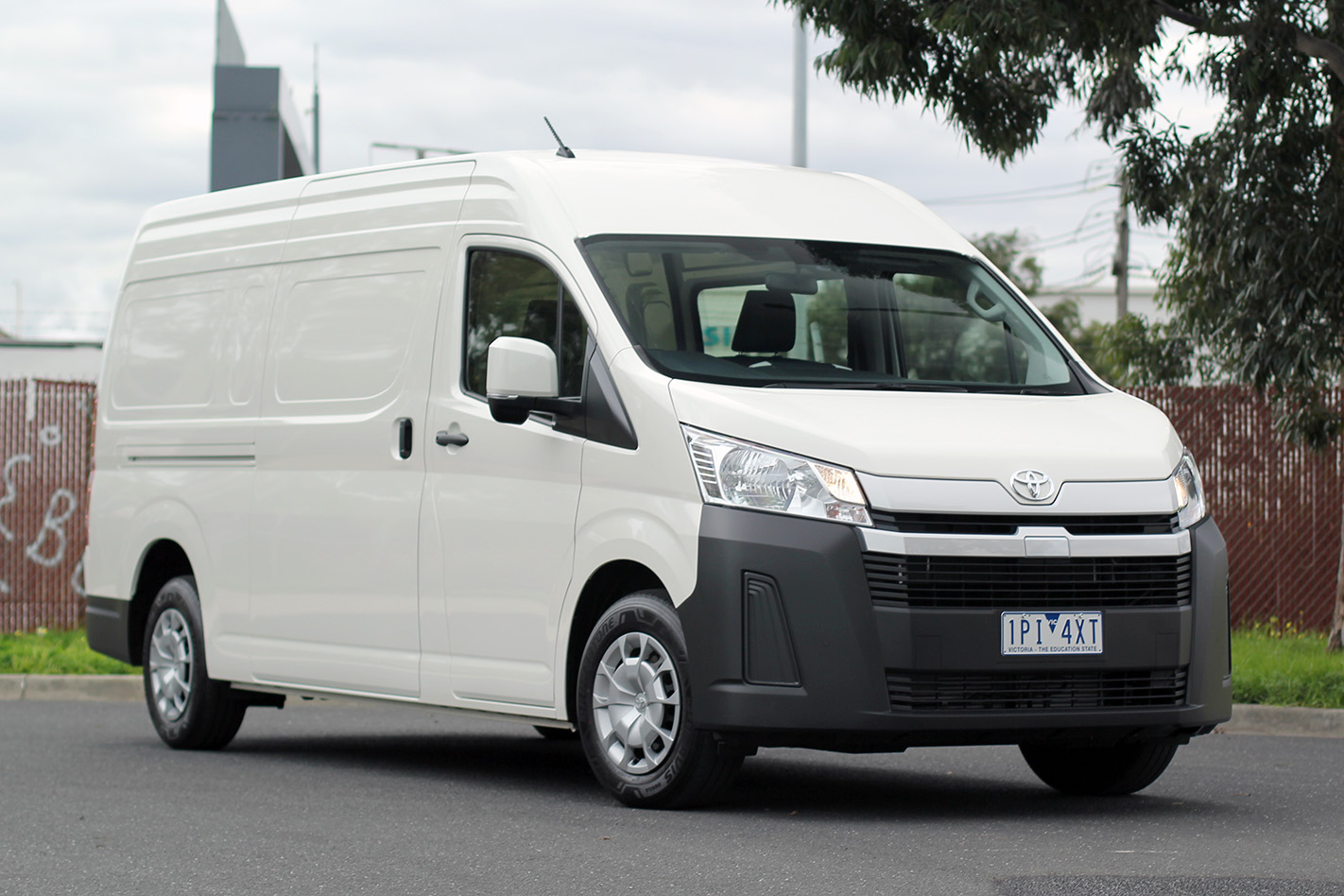
What’s it like to live with?
The Hiace experience isn’t just good from a driving point of view. As a mobile workspace, it’s miles ahead of the van it replaces.
For one, the aforementioned improvements to refinement mean drivers won’t get worn down and fatigued just from driving from site to site or delivery to delivery, while the more spacious cabin, better driving position and aids like blind spot monitoring, active cruise control and integrated sat nav should make driving such a huge van in traffic a much less stressful experience.
And it is indeed huge.
Just shy of six metres in length, the Hiace SLWB occupies a much larger footprint on the road than its predecessor. Some of that growth goes into making the front seats more accommodating (though you don’t get a centre seat in the Hiace Van anymore), but the cabin area is actually 500 litres smaller relative to the old Hiace SLWB.

Will you miss that? Not really, given the new Hiace SLWB just feels so massive thanks to its huge overall length and standard high roof. There are also six tie-down points to help secure your load, though a floor covering for the cargo area is an optional extra.
Something you might miss is a physical barrier to separate occupants from cargo. While that makes it easy to duck into the back directly from the driver’s seat, it also means the cabin takes a while to heat up or cool down and there’s nothing to quell noises from the back. Thankfully, Toyota has a couple of dealer-fit options to help separate driver from cargo, but they’ll cost you extra.
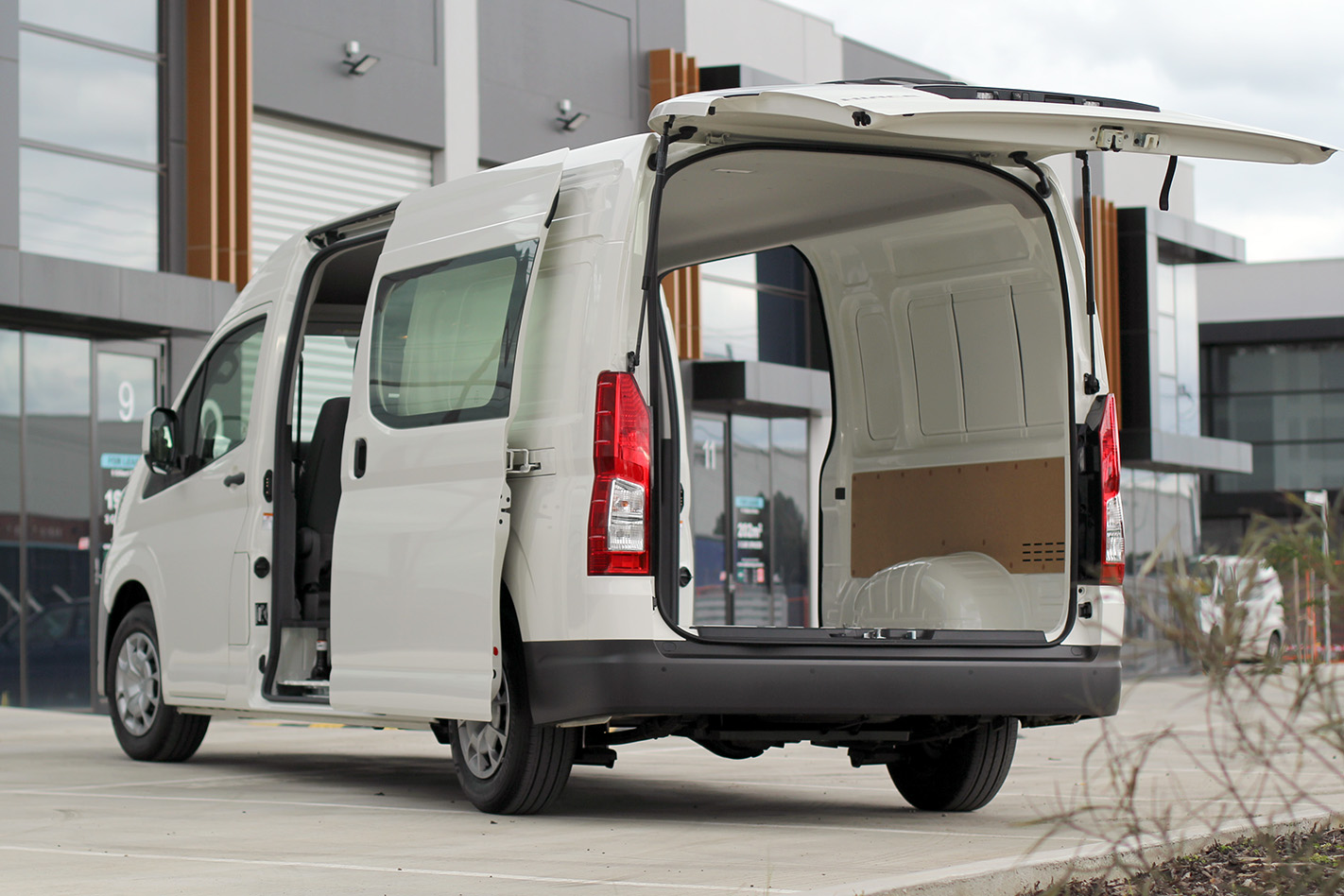
What won’t cost you extra is a sliding door on the driver’s side. All Hiace vans get two side sliding doors, something that’s rare in the commercial van segment and a genuine boon for usability. Unfortunately it’s not all wins: no Hiace variant comes with barn doors at the back, just a top-hinged liftgate that means you can’t load in pallets with a forklift from the rear.
It’s possible to fork load a pallet from the side doors, but note that it’s only possible on the SLWB. The standard wheelbase Hiace doesn’t have a big enough side door aperture for a pallet to be slid in. The Hiace SLWB’s towing capacity of 1500kg on a braked trailer is also on the low side for the segment, being roughly half a tonne behind many competitors.
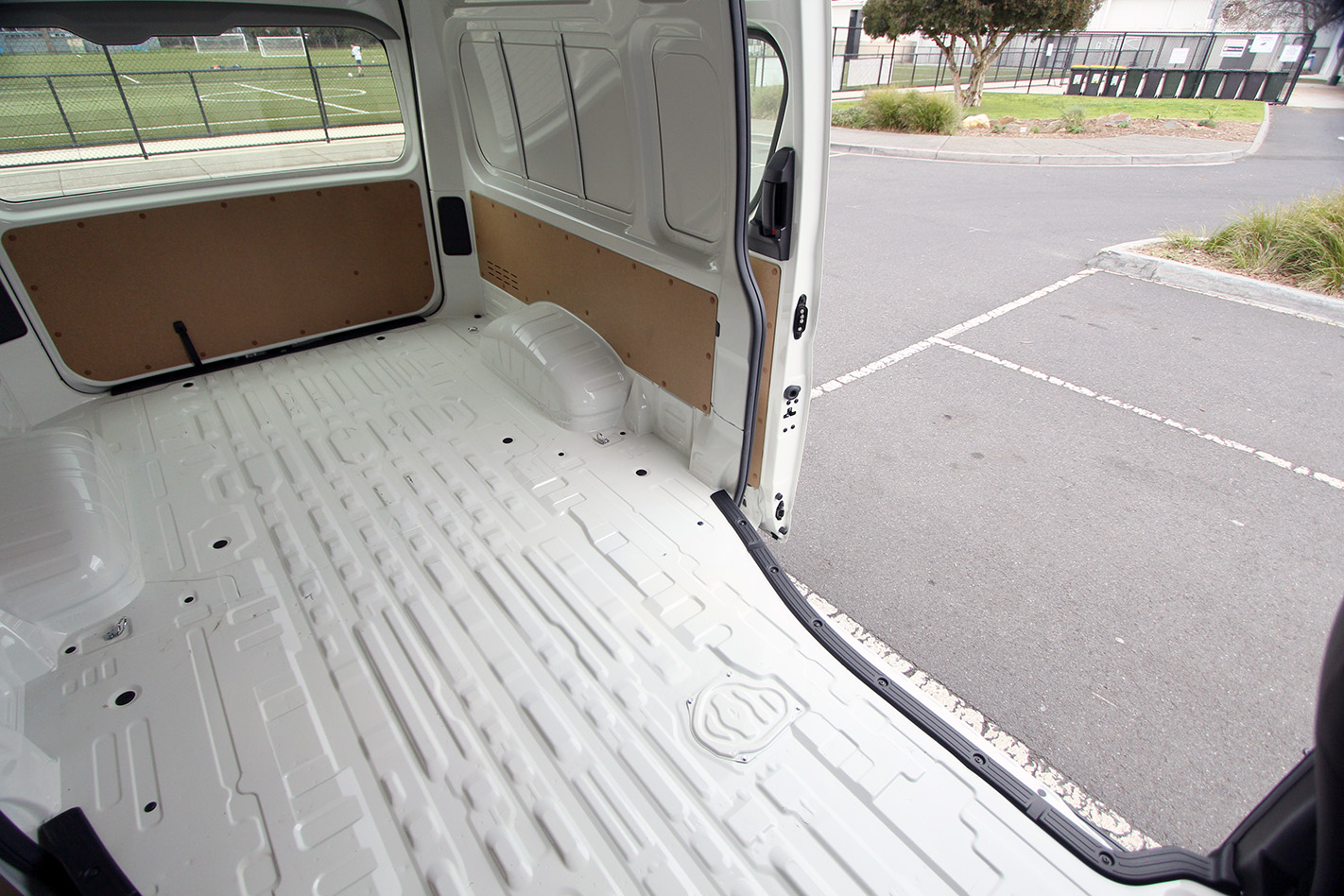
Is it worth the money?
Absolutely. Toyota has gone out to prove that it can beat the Euro van crowd at its own game, and succeeded. Prices are up thanks to the generous levels of standard equipment (the diesel SLWB is over $2K more expensive than its predecessor, for example), but most operators will recognise that they’re getting a significantly better van for their money.
You do pay more for the Hiace than other similarly-sized competitors, but that’s balanced by strong resale, a strong five-year warranty and standard service pricing that’s locked to $240 per 6 months/10,000km. Also, it’s worth noting that while the Hiace SLWB does sit on the wrong side of the $50K barrier to most of its direct competitors, it also offers significantly more cargo volume. You really do get a lot of metal for your money with this one.
Pros: Refinement, strong diesel, huge cargo area, heaps of standard features, safety credentials
Cons: Tailgate only, no cabin bulkhead, small towing capacity.
Rating: 5/5



